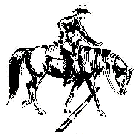Second Intention Healing, cause and effect...
DELAYED WOUND HEALING
CAUSE AND EFFECT
Last week we discussed the advantages of first intention healing of wounds. This usually means the wound is properly cleaned and the edges brought together with sutures. The result is healing with a minimum of scarring. The wound is almost impossible to find once healing is complete.
When first intention healing does not occur, the wound heals by “second intention.” This is a slower healing process. As we mentioned last week, healing occurs when cells move in from the border of the wound, one layer at a time. These overlap until the wound is full. As this ‘filler’ tightens and contracts, the edges are pulled together. If this process continues without interference, the result will usually be a small scar. Factors affecting the final size of the scar include the amount of movement in the area and treatment of the wound during the healing process.
After the initial cleansing of the wound to remove debris and contamination, our objective should be to assist the wound in its healing. Sometimes this means treating less rather than more. Many products applied to the wound will destroy the fragile cells. If this is done, new cells try to fill in for the older cells. If the wound is submitted to repeat applications of the damaging substance, the healing cells are all destroyed. Now all the body knows to do is fill in the wound with a fibrous tissue that we know as a scar.
The scar becomes thicker and harder because it is having to resist the destructive effects of the well intended treatment. Many of these treatments are used because the formula is a family secret brought over on the Mayflower, or because this is what we have always used, or it has resulted in perfect healing without fail. Some of these products include hydrogen peroxide, iodine, lime, turpentine or kerosene, and (although this used to be a very common one, I don’t hear of it as much now which may reflect on changes in our diet) salty bacon grease. All but the grease will burn fresh tissue (as seen by their effects on the edges of a fresh wound). These same effects are not as obvious after a few applications. The fragile cells have been killed off and only the scar remains. The grease may be the better of this group, but it sure draws the flies!
A few of the other common treatments include antibiotic aerosols which, if frequently used, result in drying of the wound surface. Frequent cleansing of the wound will remove the new cells that have formed a scab, and those underneath. Essentially, we sometimes have attractive wound healing in spite of, instead of because of, the efforts we have taken to assist Mother Nature.
Our preferred approach to healing wounds by second intention depends on the depth and location. If the wound is located in an area with a lot of movement, healing will be greatly enhanced by immobilizing the area. This is usually with a bandage but can also be with a cast. Bandaging also puts counter pressure on the wound and promotes smooth healing without “proud flesh” (a topic for another article).
If the wound is located where bandaging is not practical, it is treated with topical medicines. These medications should provide enough moisture to keep the wound from drying. Antibiotics are usually included to treat and prevent infections. As long as the wound is free of debris, the treatment is applied over the. scab. The scab will periodically fall off, leaving the fresh, pink surface of a smaller wound. Within hours the outer surface will dry, darken, and a new scab is formed. A few remodelings later the wound should be only a shadow of its former self.
The key to successful wound healing by second intention is to use a treatment that is beneficial to the process and does a minimum of damage when used. The wound will heal quicker and the resulting scar will be smaller. Whether healed by first or second intention, the horse’s recollection of how it hurt itself will have been forgotten long before the wound is healed!
CLICK BELOW TO DISPLAY A PRINTER-FRIENDLY COPY OF THIS ARTICLE
Select "Open this file from its current location," if you just want to print it out,
it will open in a simple word processing application, select the print button.
(unless you want to save this article in your computer's memory)

 DelayedWoundHealing_SecondIntention.rtf
DelayedWoundHealing_SecondIntention.rtf